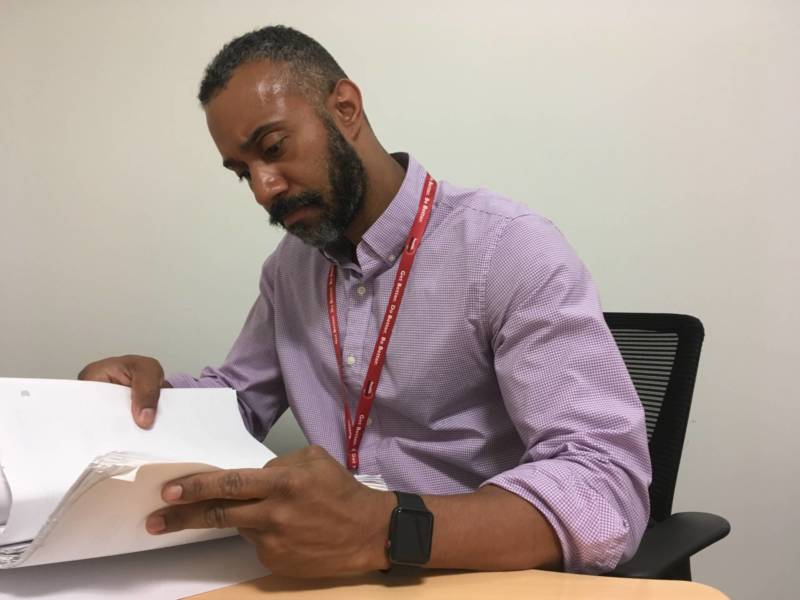“This person had intractable pain,” Jacintho said, and at the time, methadone was a preferred treatment, because it was long-acting and had less potential for addiction. In particular, Jacintho said he takes issue with the board’s choice of words in the letter: “over-prescribing” and “toxic levels.”
“Toxicity is a very subjective word,” he said. “What’s a toxic level for someone may not be a toxic level for someone else.”
It wasn’t until 2016 that the Centers for Disease Control and Prevention issued new guidelines for prescribing opioids, telling doctors to start with low dosages and increase slowly. And when possible, use ibuprofen instead.
But, back in 2012, doctors like Jacintho were being admonished to never leave a patient in pain. The California medical board’s own guidelines from 2013 said that for certain types of pain, opioids were the cornerstone of treatment and should be pursued vigorously.
“It actually says that no physician will receive disciplinary action for prescribing opioids to patients with intractable pain,” Jacintho said.
Now the medical board is using death certificates from 2012 and 2013 to discipline doctors.
The timing of the investigation really bothers Jacintho, because in the six years since his patient died, he has totally revamped his practice. As a family doctor, he saw the opioid crisis coming. He had patients asking for more, and stronger drugs, even though their pain stayed the same. So he switched gears, went back into training and got certified as an addiction specialist.
“If they’re looking for clinicians who are overprescribing, I’m the wrong doctor,” he said.
Kim Kirchmeyer, executive director of the Medical Board of California, said medical investigators take career changes like this into account, and they review medical records according to the standard of care that was in place at the time.
“We understand that, just because a patient has overdosed, that doesn’t mean that the care and treatment provided was not appropriate,” she said. But anytime there may have been a violation of the law, she added, “we do need to look into it.”
The board is punishing only doctors who actually broke the law, she said: those with a clear and repeated pattern of inappropriate prescribing.
“Individuals were prescribing drugs without even performing a history and physical exam,” she said. They never did any kind of testing, they didn’t provide informed consent. “They don’t have a treatment plan or objectives. They just continue to prescribe and prescribe.”
Investigators have so far completed investigations for about half of the 500 doctors originally identified as possibly deviating from the standard of care. The majority were cleared of any wrongdoing, and the board filed formal accusations against 25 doctors.
Hundreds of doctors like Jacintho are still waiting, more than a year later, to learn their fate.
Ultimately, this effort is about patient safety, not doctors’ comfort, Kirchmeyer said. The medical board’s mandate is to be a consumer protection agency.
“If we save one life through this project, that is meeting the mission of the board, and that makes this project so worth it,” she said.
But it’s unclear if the overall effect of the project will be good for patients, or bad. Some doctors, including Jacintho, have been so frightened by the letters they’ve cut their patients’ opioid doses or cut them off completely. Some doctors are telling their chronic pain patients to find another doctor. This carries a whole new set of risks.
“It’s like leaving a pair of scissors in an abdomen after surgery,” said Dr. Phillip Coffin, director of substance use research at the San Francisco Department of Public Health. “If you’re just going to discontinue opioids, basically you’re ripping out the scissors and telling the person ‘good luck.’ Let them deal with the intestinal perforation on their own.”
The CDC’s 2016 guidelines on how to prescribe opioids are for patients who have never taken them before. They include virtually no guidelines on how to taper down doses for chronic pain patients who have already been taking high doses of opioids for many years.
Preliminary research from the San Francisco Department of Public Health suggests some patients who are weaned off long-term prescription opioids are twice as likely to turn to street drugs. That increases risk of overdose.
“Scaring providers into not prescribing opioids, I think that is not the ethically appropriate way to go forward,” Coffin said of the Death Certificate Project.
It was never the board’s intention for doctors to simply stop prescribing opioids, Kirchmeyer said, and it doesn’t want that. She said board members have already learned some lessons on how to improve their approach: They’ve rewritten the letters so they’re less accusatory. And, they know they have to move faster with the investigations.

